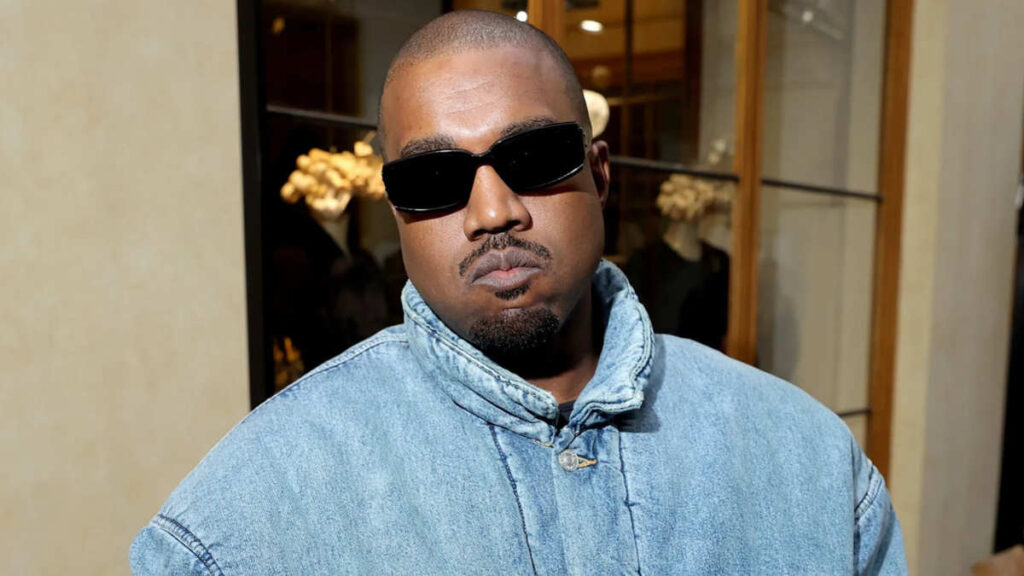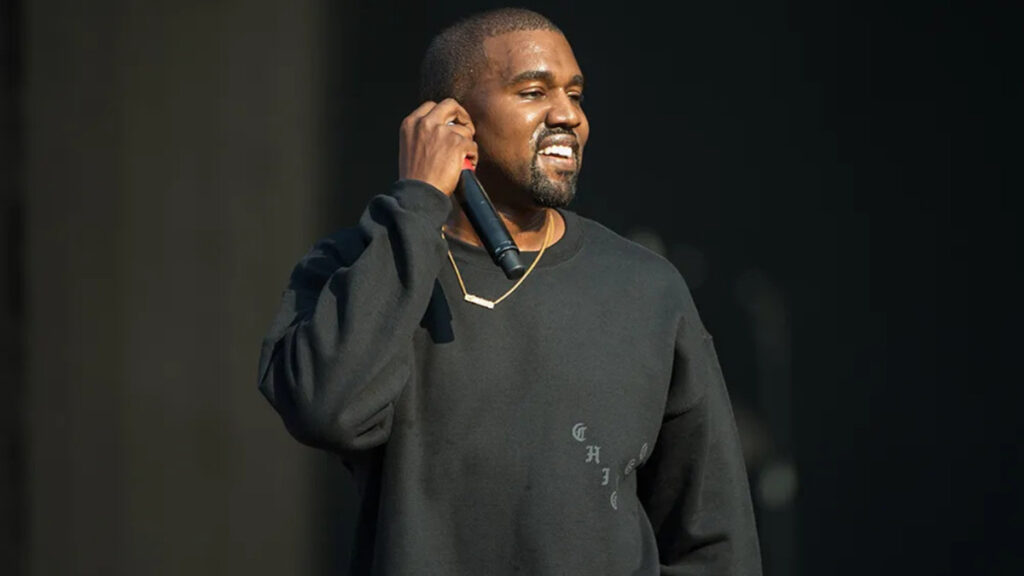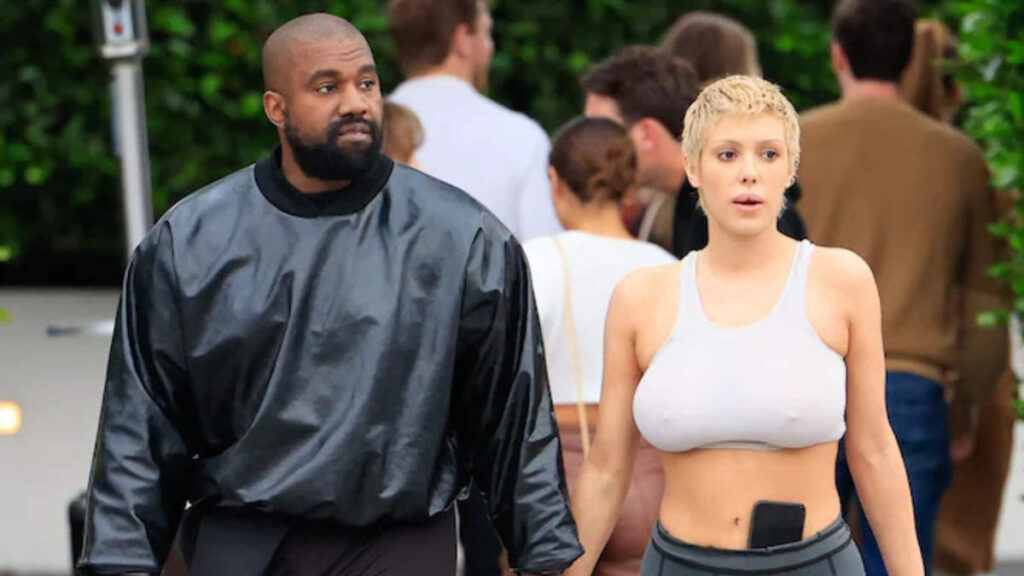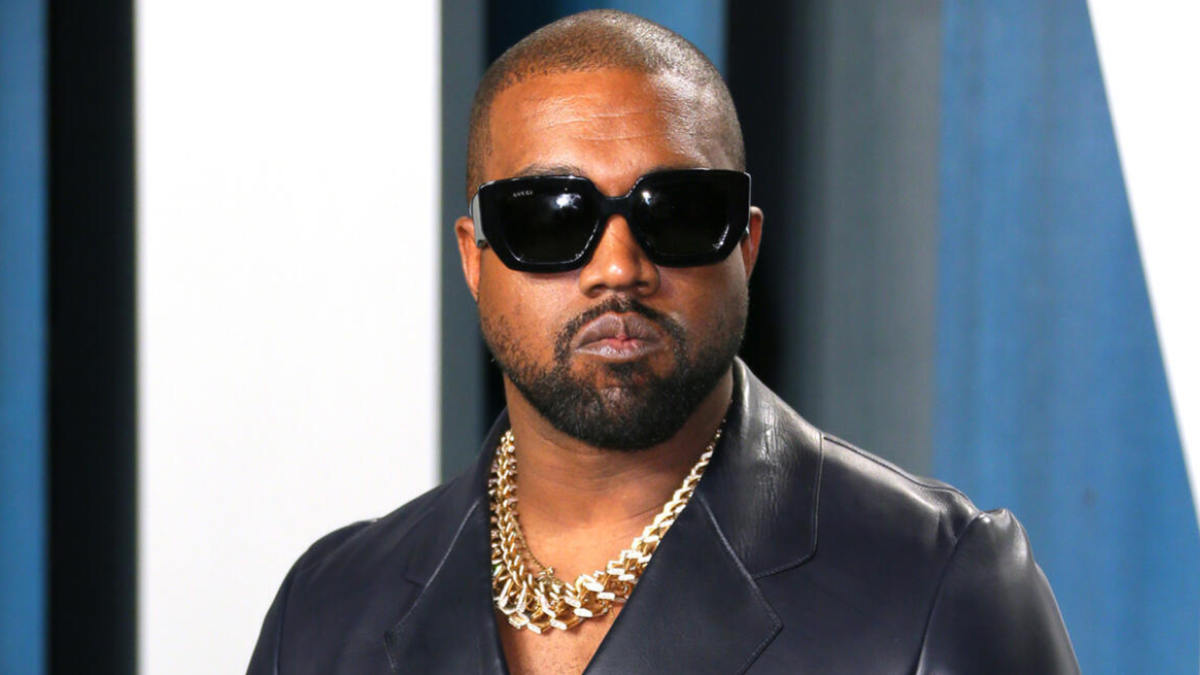He once claimed to be $53 million in personal debt — on Twitter, no less — and a few years later, Forbes was calling him a billionaire. Now it’s 2025, and Kanye West’s net worth still refuses to settle.
Despite lawsuits, dropped deals, and public implosions that would bankrupt a lesser brand, Ye’s financial empire remains bafflingly intact — and in some areas, still wildly lucrative. Depending on who you ask, his fortune this year sits somewhere $400 million, fluctuating with the valuation of Yeezy’s remnants, music royalties, and new ventures like the Stem Player.
But the real story isn’t the number. It’s how someone so polarizing, unpredictable, and at times self-sabotaging continues to shape — and shake — the economics of fame. Kanye’s wealth isn’t about slow, stable accumulation. It’s a volatile, innovation-fueled machine that mirrors the man himself: messy, brilliant, and impossible to ignore.
And to understand how it all adds up in 2025, you have to unpack the art, the ownership, and the chaos.
From Beats to Billions — Kanye’s Career Timeline and Financial Evolution
2004–2010: The College Dropout to G.O.O.D. Music Mogul
Before he was headlining Paris Fashion Week or launching tech-driven platforms, Kanye West was a backpack-wearing beatmaker with something to prove. From 2004 to 2010, he turned that hunger into an empire-in-the-making. The College Dropout wasn’t just a critical darling—it sold over 3 million copies and put him on a fast track to solo stardom. With each album, from Late Registration to Gradation, his tours got bigger, his sound more ambitious, and his wallet noticeably heavier. But the real power move came in 2004 when he launched G.O.O.D. Music, shifting from artist to executive. By the end of the decade, Kanye wasn’t just making hits—he was building the infrastructure to profit from them. The seeds of mogulhood were already taking root.
2011–2018: A Creative Tsunami — Expanding into Fashion and Art
Between 2011 and 2018, Kanye West stopped following trends and started bending industries to his will. This was the era of Yeezus, of couture masks and fashion week disruptions, where his ambitions outgrew the charts and spilled into runways, architecture, and visual art. His early forays into high fashion—collabs with Fendi, then stints at Paris Fashion Week—were costly, both financially and reputationally. Critics scoffed, but Kanye kept building, eventually launching Yeezy Season 1 with Adidas in 2015. At the same time, he founded DONDA, a creative agency-meets-thought-lab that blurred lines between design, branding, and performance art. These weren’t side projects—they were calculated risks that began turning cultural capital into actual capital. Kanye wasn’t just making art. He was monetizing vision.
2019–2025: Yeezy Empire, GAP Deal Fallout, and Stem Player Ventures
From 2019 to 2025, Kanye West entered his most turbulent — and telling — financial era. After turning Yeezy x Adidas into a multibillion-dollar juggernaut, he stunned the industry by severing ties in 2022 amid public controversies. Around the same time, his highly publicized partnership with GAP collapsed, the fallout marked by lawsuits and unfulfilled visions of “accessible luxury.” But Ye’s response wasn’t retreat — it was reinvention. Enter the Stem Player: a self-distributed music device that doubled as a revenue experiment and a statement on creative independence. These years revealed a core truth about his empire — even when major brands walk away, Kanye’s wealth isn’t just tied to partnerships; it’s tied to ownership. And that keeps his fortune resilient, if unpredictable.

What Is Kanye West’s Net Worth in 2025? An Expert Breakdown
As of 2025, Kanye West’s net worth is estimated at approximately $400 million, according to the latest figures from Forbes. That’s a dramatic dip from his 2021 peak, when Yeezy’s Adidas deal had him sitting comfortably in the billionaire club. But the $400 million figure tells a more nuanced story—it’s not a fall from grace, it’s a recalibration of where Kanye’s money lives.
A sizable portion of that net worth still comes from the Yeezy brand, even after Adidas terminated the partnership. Although the retail pipeline dried up, Kanye retained full ownership of the brand’s intellectual property—a valuable asset in licensing, resale, and long-term cultural relevance. Think of Yeezy like his Apple: the brand’s true value lies in design IP, not just distribution.
Other key pillars include his music catalog, estimated to generate millions annually through streaming and licensing, and the Stem Player, which, though niche, gives Kanye direct-to-consumer leverage without label intermediaries. Add in real estate holdings, from Wyoming compounds to LA properties, and you begin to see how the puzzle fits together.
What’s notable is how diversified his wealth remains—less cash-heavy, more brand-and-ownership driven. The biggest surprise? Even after public fallout with two major retailers and the loss of billionaire status, Kanye’s fortune still towers above most of his peers. The volatility is real, but so is the staying power.
Inside the Yeezy Business Model — Fashion as Financial Freedom
A Disruptor in Designer Sneakers
Kanye West didn’t just make sneakers — he made them events. When he launched the Yeezy Boost 750 with Adidas in 2015, the release wasn’t just about shoes; it was about status, scarcity, and story. Unlike traditional celebrity collabs, Kanye insisted on creative control, designing silhouettes that felt more like runway pieces than athletic wear. By leaning into limited drops and minimalist aesthetics, he turned Yeezys into cultural currency — sneakers people had to talk about, post about, and line up for. The resale market exploded, with pairs flipping for 5–10x retail prices, creating an ecosystem where hype became a business model. In an industry dominated by legacy brands and athlete deals, Kanye proved that a rapper could reshape sneaker culture — and cash in doing it.
When Hype Meets Revenue
Kanye West mastered the art of turning buzz into bank. With each Yeezy drop, the internet lit up—hashtags trended, countdown timers ticked down, and resale prices skyrocketed before shoes even hit shelves. That hype wasn’t accidental; it was baked into the business model. By keeping supply tight and demand insatiable, Kanye created a scarcity loop that fueled both hype and perceived value. In peak years, Yeezy reportedly pulled in over $1.3 billion in annual revenue, with Kanye personally earning hundreds of millions in royalties. Meanwhile, resale markets like StockX and GOAT amplified the frenzy, turning each drop into a secondary economy. The result? A self-sustaining machine where cultural relevance is directly translated into bottom-line growth—one drop at a time.
Is the Brand Still Profitable?
Without Adidas, many assumed Yeezy would collapse—but the reality is more complicated. While the end of their partnership in 2022 slashed Kanye’s revenue and production, it didn’t strip him of ownership. Kanye still holds the Yeezy IP, meaning he can license or self-distribute—if he can navigate the logistics. In 2023, he began experimenting with direct-to-consumer releases, including limited runs sold through Yeezy Supply and unconventional platforms like the Stem Player store. Though scale and margins aren’t what they were with Adidas, these moves suggest a leaner, more autonomous model. As Business of Fashion noted, “The Yeezy brand retains cultural value—what it lacks now is infrastructure.” In short: not as profitable, but not dead either. It’s Yeezy 2.0—smaller, riskier, but still alive.
Also See: Top 50 Richest Rappers in the World
Music Royalties, Ownership, and Independence — Kanye’s Audio Assets in 2025
Kanye West’s music catalog remains one of his most enduring—and lucrative—assets. As of 2025, he reportedly retains partial ownership of his masters for earlier albums, while holding full rights over more recent, independently released works like Donda and Jesus Is King. In an era when artists are reclaiming their catalogs (think Taylor Swift) or cashing out big (like Jay-Z’s deal with Square), Kanye’s hybrid model keeps him earning through streaming royalties, licensing, and sync placements without fully selling off his legacy.
His catalog spans multiple platinum albums with long streaming tails—songs like “Stronger” and “Gold Digger” continue to rake in millions annually across platforms like Spotify and Apple Music. According to music industry analysts, Kanye earns an estimated $5–8 million per year from music royalties alone, with potential spikes during album drops or cultural resurgences.
What sets him apart is how he uses his catalog as leverage. Rather than chase a catalog sale, he’s funneled older work into self-owned platforms like the Stem Player, cutting out traditional distributors and maximizing per-listen revenue. In music finance, ownership equals power—and Kanye, even with industry friction, has kept enough control to turn nostalgia into recurring income.

How Kanye’s Net Worth Compares to Other Industry Giants
In the world of celebrity billionaires and near-billionaires, Kanye West sits in rare company—but he’s playing a different game altogether. While his estimated $400 million net worth in 2025 puts him below past rivals like Jay-Z ($2.5B) and Rihanna ($1.4B), the paths they’ve taken couldn’t be more different.
Jay-Z built a classic empire: music rights, spirits (D’Ussé), and smart investments in tech and art. Rihanna, meanwhile, leveraged her fame into Fenty Beauty, turning inclusivity into a global luxury brand. Even Drake, reportedly worth over $300 million, has diversified via real estate and partnerships like NOCTA with Nike. Beyoncé’s net worth, around $600 million, is rooted in brand control, touring, and Ivy Park—but remains tied to legacy platforms.
Why Kanye’s Fortune Is More Than a Number
I’ve followed Kanye West’s career since The College Dropout—long before Yeezys, presidential runs, or Stem Players. What’s always struck me isn’t just his talent, but his instinct to bet on himself—sometimes recklessly, often brilliantly. Watching his financial journey unfold has felt like watching a live wire spark across music, fashion, and tech: unpredictable, but undeniably powerful.
Kanye’s fortune isn’t just a dollar amount on a spreadsheet. It’s a reflection of someone who refuses to be a tenant in someone else’s house—whether that’s a record label, a fashion conglomerate, or a social narrative. Every fallout, every pivot, every high-stakes gamble tells the story of a man obsessed with ownership—not just of assets, but of ideas.
That said, the same drive that builds can also burn. He’s lost deals, goodwill, and maybe some financial stability along the way. But what remains is rare: a creative who made his name in one industry and bent others to fit his vision. His wealth, even at a reduced valuation, isn’t just survival—it’s proof that reinvention, when rooted in control, has real staying power. And whether you admire him or not, that part of his legacy is hard to ignore.
Also see: Top 50 Richest Singers in the World
Real Estate, Branding, and the Lifestyle of a Billionaire Enigma
From Wyoming Ranches to Hidden Bunkers
Kanye West didn’t just buy homes—he built an aesthetic. His move to Wyoming in 2019, purchasing over 4,000 acres across two ranches, felt less like a real estate play and more like a retreat into his own mythos. These sprawling, isolated properties became design labs, recording studios, and metaphors for his craving for control and solitude. He called one “Yeezy Campus,” envisioning a futuristic hub for architecture, music, and fashion.
Beyond Wyoming, Ye’s reported purchases of minimalist homes in Malibu and scattered plots in L.A. reflect a stripped-down, almost monk-like architectural style: concrete, raw, secure. These spaces aren’t just places to live—they’re statements. His real estate isn’t about comfort or status. It’s about legacy, privacy, and building a world on his own terms.
Ye the Brand — Love It or Cancel It, It Still Sells
Kanye West is one of the few public figures whose controversies seem to amplify—not erode—his brand value. From political rants to social media meltdowns, Ye’s unpredictability has made him polarizing, but also unmissable. Every time the internet explodes with headlines about him, streams of his music surge, merch sells out, and media attention resets the spotlight.
Take the aftermath of his GAP and Adidas splits—while many expected financial ruin, fans were still snapping up Yeezy inventory, and resale markets stayed hot. Even limited merch drops tied to events like Donda listening parties generated millions. Love him or cancel him, the brand moves. Because Ye isn’t selling perfection—he’s selling provocation, and for better or worse, the market eats it up.

What’s Next for Kanye’s Fortune?
Looking ahead, Kanye West’s financial future is as unpredictable as his headlines—but if the past is any indication, he’s not done evolving. One possibility is a strategic sale of his music catalog, which could fetch hundreds of millions given its enduring relevance. But Ye has always been more interested in control than cashouts, making it just as likely he’ll continue funneling his work through self-owned platforms like the Stem Player, or even launch a new one entirely.
With the rise of digital ownership models—from NFTs to creator-owned streaming services—Kanye is well-positioned to pioneer a space that lets artists monetize without middlemen. He’s already proven he can bypass traditional systems. The next step could be scaling that model for others, turning personal rebellion into a replicable business.
There’s also the wildcard of a public venture—perhaps a Yeezy IPO, reimagined without corporate oversight. Whatever the path, Kanye’s legacy will hinge less on how much he earns next, and more on how he does it. His fortune isn’t just money—it’s a living case study in reinvention. And if history holds, Ye’s next move won’t be predictable—but it will be loud.
Kanye West’s Wealth Isn’t Just Built — It’s Engineered
Kanye West’s wealth isn’t the product of luck, nor is it just the byproduct of fame—it’s the result of deliberate, often defiant engineering. He’s wielded creativity as currency, turned controversy into commercial momentum, and treated ownership not as a perk, but as a principle. From controlling his music catalog to designing every detail of Yeezy, Ye has built an empire not by following trends, but by forcing industries to follow him.
Yes, the path has been volatile—filled with fallouts, lawsuits, and polarizing moments. But behind the spectacle lies a strategy: stay independent, stay unpredictable, and stay in charge.
If you want to understand how celebrity wealth is being redefined—not just accumulated—Kanye’s blueprint is essential reading. Dive deeper into how he’s changing music ownership, reshaping fashion, and rewriting what legacy looks like in the age of personal empires.
Nishant is a digital strategist and celebrity finance analyst with over 15 years of experience in SEO-driven content. As Founder of TheNetWorths.com, he creates high-authority profiles on wealth, branding, and cultural influence.




















10 thoughts on “Kanye West Net Worth 2025: From Billion-Dollar Yeezy to $400M Comeback”